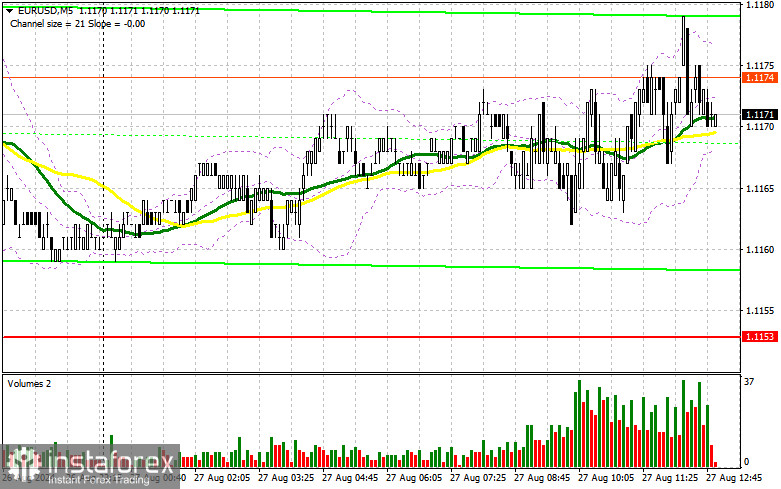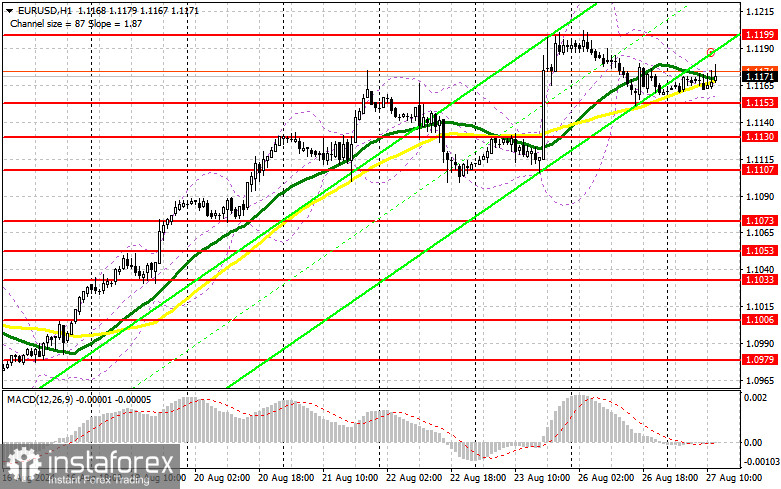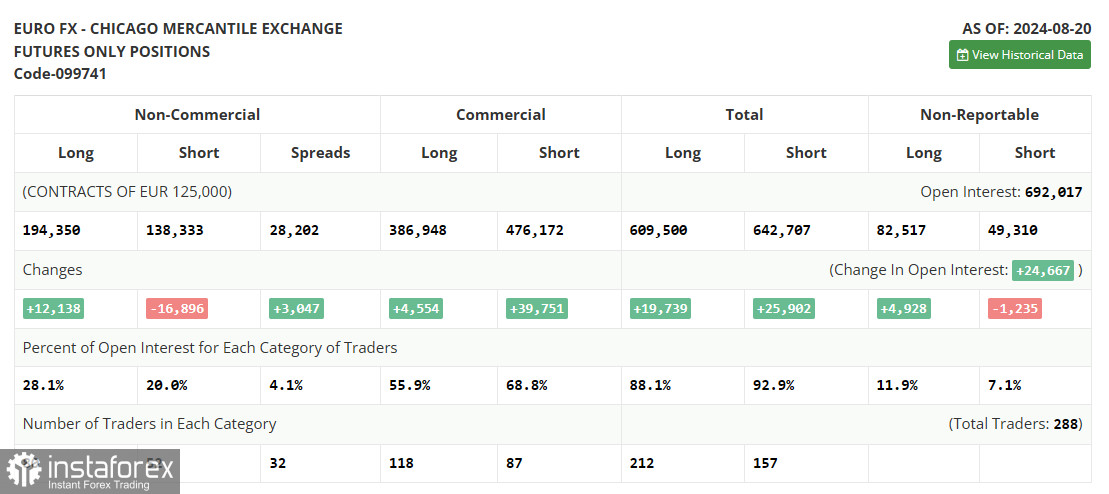In my morning forecast, I focused on the 1.1153 level and planned to make market entry decisions based on it. Let's look at the 5-minute chart and see what happened. The decline occurred, but there was no test or false breakout formation at this level. Due to low volatility, no suitable entry points emerged. Nevertheless, the technical picture was slightly revised for the second half of the day.

To Open Long Positions on EUR/USD:
Germany's GDP figures matched economists' forecasts, and although the report was disappointing, it exerted only minimal pressure on the euro, as preliminary data had already indicated a contraction in GDP in the second quarter. The second half of the day is expected to be more eventful, with upcoming data on U.S. consumer confidence, the Richmond Fed manufacturing index, and the home price index in the 20 largest U.S. cities. A drop in consumer confidence is likely to support the euro, but an increase in the indicator, which is quite possible under current conditions, could push EUR/USD even lower, which I intend to take advantage of. A decline followed by a false breakout at the 1.1153 support level will provide a suitable condition for opening long positions, aiming for a rise in the euro and the strengthening of the bullish trend, with a return to the monthly high of 1.1199. A breakout and upward retest of this range will lead to a rise in the pair with a chance to test 1.1237. The final target is 1.1274, where I will take profits. If EUR/USD declines without significant activity around 1.1153 in the second half of the day, sellers will have a chance for a larger correction. In this case, I will enter only after a false breakout around the next support level at 1.1130. Additionally, I plan to open long positions on a rebound from 1.1107, targeting a 30-35 point upward correction within the day.
To Open Short Positions on EUR/USD:
Sellers have also taken a wait-and-see approach, reacting only slightly to the data from Germany. If the euro rises in the second half of the day (and remember, we are in a bullish trend), I expect sellers to appear only around the resistance at 1.1199, which we have not yet reached today. A false breakout at this level will provide an opportunity to open short positions with the target of reducing the pair to support at 1.1153, where the moving averages, which favor the bulls, are slightly above. A breakout and consolidation below this range, along with a downward retest, will provide another selling point, with movement toward 1.1130, where I expect a more active response from the bulls. The final target is 1.1107, where I will take profits. If EUR/USD rises despite weak U.S. economic data and there are no bears at 1.1199, which cannot be ruled out, buyers will regain the initiative, with the opportunity to renew the monthly high and further increase the pair. In this case, I will postpone selling until testing the next resistance at 1.1237. I also plan to sell there, but only after an unsuccessful consolidation. I plan to open short positions immediately on a rebound from 1.1274, targeting a 30-35 point downward correction.


Indicator Signals:
Moving Averages:
Trading around the 30 and 50-day moving averages suggests a range-bound market.
Note: The period and prices of the moving averages are considered by the author on the hourly H1 chart and differ from the general definition of classic daily moving averages on the daily D1 chart.
Bollinger Bands:
In case of a decline, the lower boundary of the indicator in the 1.1153 area will act as support.
Indicator Descriptions:
- Moving average: Determines the current trend by smoothing volatility and noise. Period 50. Marked in yellow on the chart.
- Moving average: Determines the current trend by smoothing volatility and noise. Period 30. Marked in green on the chart.
- MACD (Moving Average Convergence/Divergence): Fast EMA period 12. Slow EMA period 26. SMA period 9.
- Bollinger Bands: Period 20.
- Non-commercial traders: Speculators, such as individual traders, hedge funds, and large institutions using the futures market for speculative purposes and meeting certain requirements.
- Long non-commercial positions: Represent the total long open position of non-commercial traders.
- Short non-commercial positions: Represent the total short open position of non-commercial traders.
- Net non-commercial position: The difference between short and long positions of non-commercial traders.
 English
English 
 Русский
Русский Bahasa Indonesia
Bahasa Indonesia Bahasa Malay
Bahasa Malay ไทย
ไทย Español
Español Deutsch
Deutsch Български
Български Français
Français Tiếng Việt
Tiếng Việt 中文
中文 বাংলা
বাংলা हिन्दी
हिन्दी Čeština
Čeština Українська
Українська Română
Română

